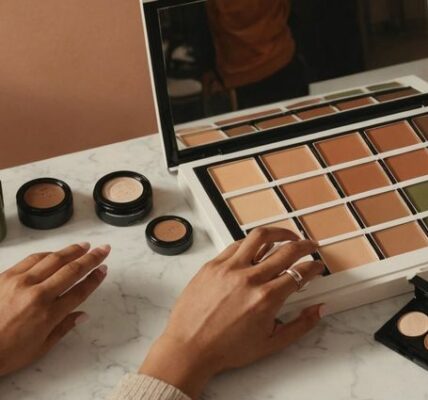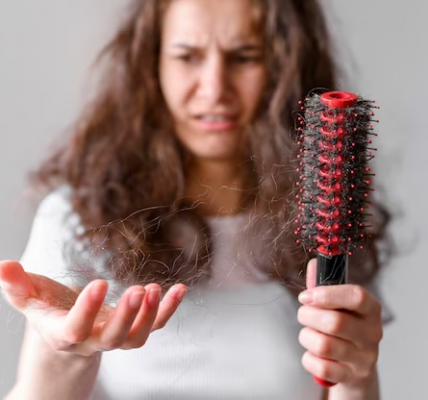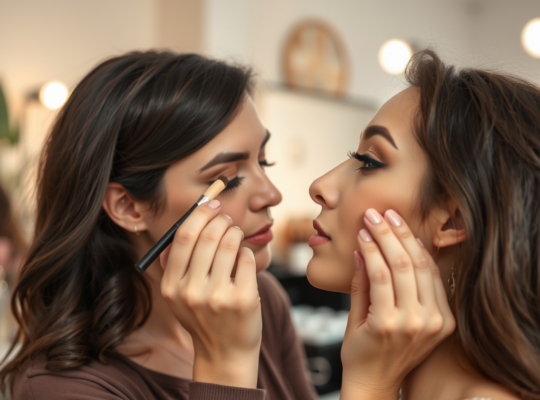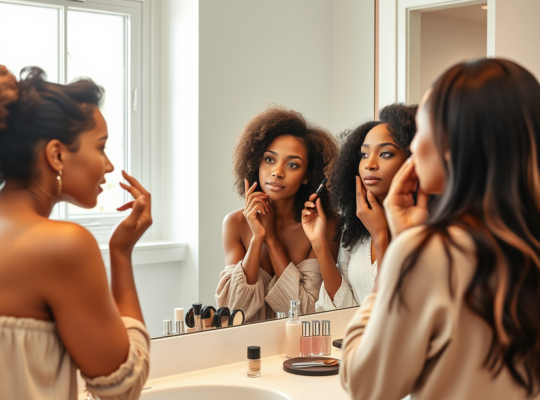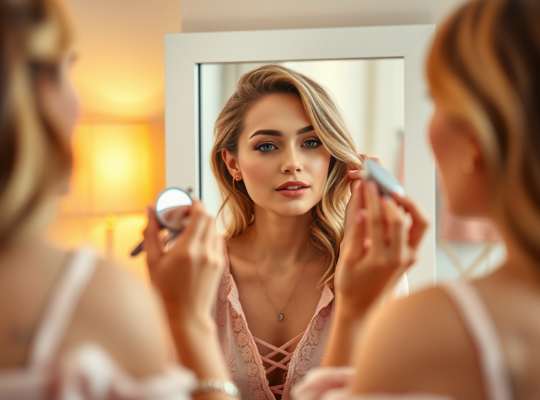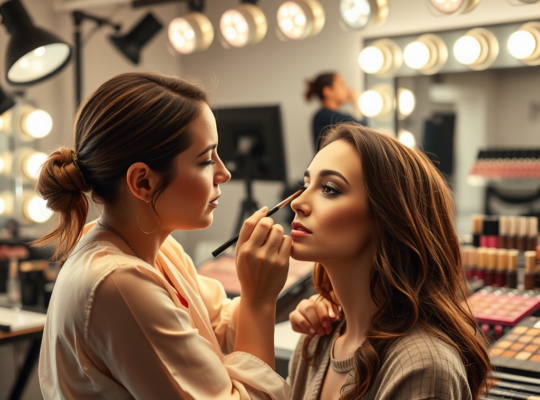Mastering the Art of Concealing Bruising with Makeup
When it comes to camouflaging bruising with makeup, the aim is to neutralize discolored skin and blend the affected area with your natural skin tone. Bruises can range in color from dark purple to yellowish-green as they heal, making them a challenge to cover effectively. However, with the right color-correcting techniques and products, it is entirely possible to achieve a seamless and natural finish. This article will guide you through the process of selecting the appropriate cosmetics, applying them correctly, and setting your makeup to ensure that any signs of bruising remain invisible throughout the day.
Understanding Color Correction
The color wheel is an essential tool in makeup artistry, particularly when it comes to concealing discolorations. As bruises heal, they change color, which requires different strategies at each stage. A fresh bruise tends to be red or purple, and is best neutralized with a yellow or peach concealer. As it turns bluish or black, an orange-toned concealer becomes more effective. As the bruise heals further, greenish hues emerge, which are best countered with a pink or red concealer. Remember, the key to successful color correction is applying the complementary color directly opposite the bruise’s color on the color wheel. This counteracts the bruise’s tone and brings it closer to your natural skin color.
Choosing the Right Products
For effective bruise camouflage, you’ll need a few key products:
- Color corrector concealer: Invest in a palette that includes various hues, as this allows you to mix and match to counteract the specific color of your bruise at any stage of healing.
- High-coverage concealer: A concealer in your natural skin tone with a high coverage formula will help to smooth over the color corrector and ensure the bruise is completely hidden.
- Setting powder or spray: This will help to set your makeup and prevent it from sliding or smudging throughout the day, which is especially important when covering a bruised area.
- Makeup brushes or sponges: For applying and blending concealers seamlessly into your skin.
Remember to also have on hand a cleanser and moisturizer suitable for your skin type. This will ensure your skin is prepped and primed for makeup application.
Application Techniques
When it comes to applying makeup to cover a bruise, technique and patience are vital.
- Start with a clean, moisturized surface. Makeup adheres best to skin that is well-hydrated and free of oils and dirt.
- Apply the color corrector sparingly over the bruised area, using a brush or sponge to pat and blend the product. It’s important not to rub, as this can irritate the area and actually make the bruise more prominent.
- Next, layer a high-coverage concealer in your skin tone on top of the color-corrected area. Again, use dabbing motions for a blended look without wiping away the color corrector underneath.
- To ensure longevity, set the concealed area with a lightweight setting powder or spray, which prevents the makeup from creasing or rubbing off during the day.
- If necessary, apply your foundation or the rest of your makeup routine as usual, ensuring to blend well around the covered area for a natural finish.

Day-to-Day Wear and Care
When wearing makeup to cover a bruise, certain precautions can ensure your makeup stays put without causing further irritation to the bruised area. – Always apply makeup to a clean surface and avoid applying too much pressure. – Use products labeled non-comedogenic to prevent pore clogging, particularly if the bruised area is on your face. – If you’re going to be active or outside, consider water-resistant products to prevent sweating or weather conditions from causing the makeup to run. – Remove your makeup gently at the end of the day with a soft cleanser, again to prevent further bruising or skin irritation. – To allow your skin to breathe and reduce the risk of irritation, go makeup-free whenever possible, especially when you’re staying indoors or while sleeping.
Maintaining Healthy Skin during Healing
While cosmetics can work wonders to hide bruising, skincare is crucial in supporting the healing process and ensuring the best canvas for makeup application. – Drink plenty of water to stay hydrated, which helps your skin remain supple and aids in the healing process. – Eat a balanced diet rich in Vitamin C and K, which are known to strengthen skin and speed up the healing of bruises. – Protect the affected area from further injury and sun exposure, as UV rays can exacerbate the appearance of bruises and impede the healing process. – If your bruised skin is also broken or scraped, use an antiseptic to prevent infection and an appropriate healing ointment as advised by a healthcare professional.
Conclusion
Covering bruising with makeup isn’t just a matter of slapping on some foundation. This process requires a strategic approach, beginning with color-correcting, choosing the right products, mastering application techniques, and ensuring proper wear and care daily. While makeup does an excellent job at concealing, healing from within, by maintaining a healthy lifestyle, is just as critical for the upkeep of your skin during the healing process. With practice, patience, and the proper tools and techniques, almost any bruise can be rendered invisible, allowing you to feel confident in your appearance.
Frequently Asked Questions
- Can makeup application make bruising worse?
It’s important to be gentle when applying makeup over a bruise to prevent aggravating the area. Use light dabbing motions rather than rubbing or pressing hard. - Is it safe to apply makeup over a fresh bruise?
Yes, as long as the skin is not broken. Always ensure that the area is clean and that you use gentle motions to apply the makeup. - How long will makeup keep a bruise concealed?
With high-coverage makeup and proper setting techniques, bruising can be concealed all day. Reapplication may be necessary if you are sweating or the makeup gets wet. - Should you use a special cleanser to remove makeup from a bruised area?
A gentle cleanser should suffice, but avoid scrubbing. Products designed for sensitive skin may be beneficial if the area is tender. - Can I prevent bruising from occurring?
While you can’t always prevent bruising, minimizing the risk of injury, protecting your skin from excessive force, and maintaining a healthy diet can reduce the likelihood and severity of bruises.



